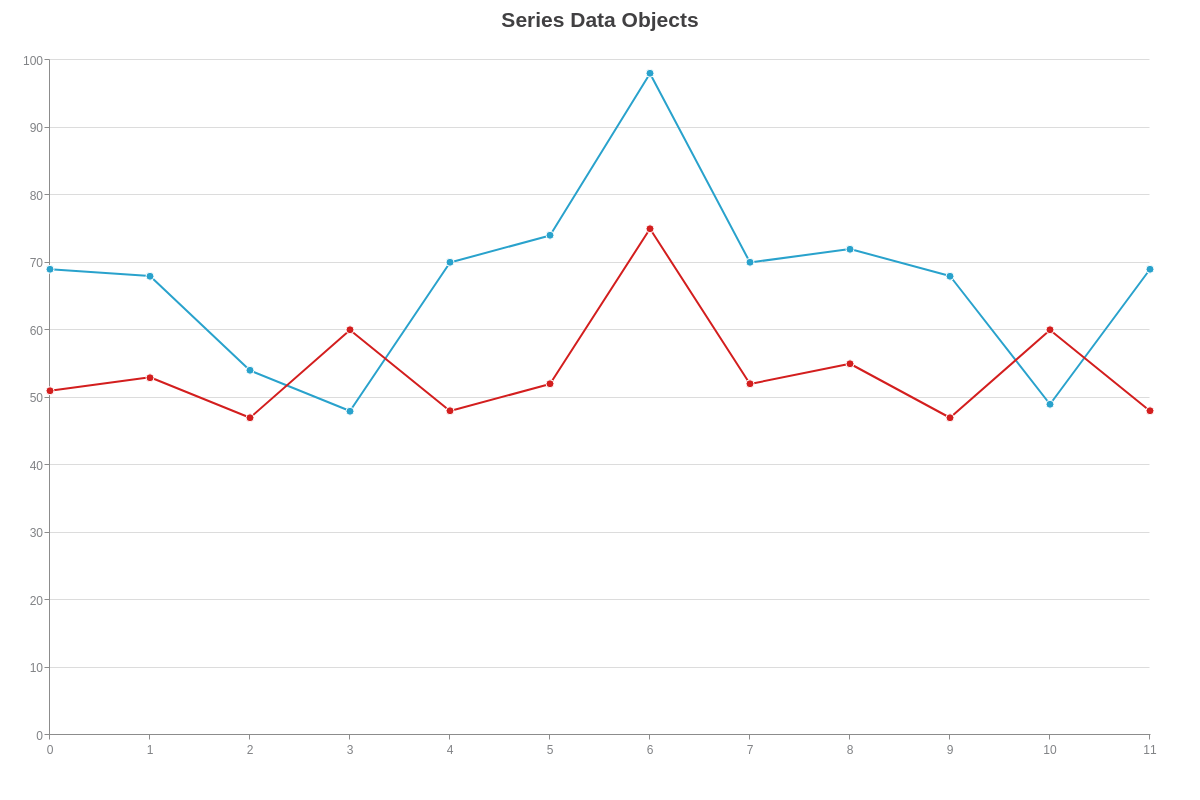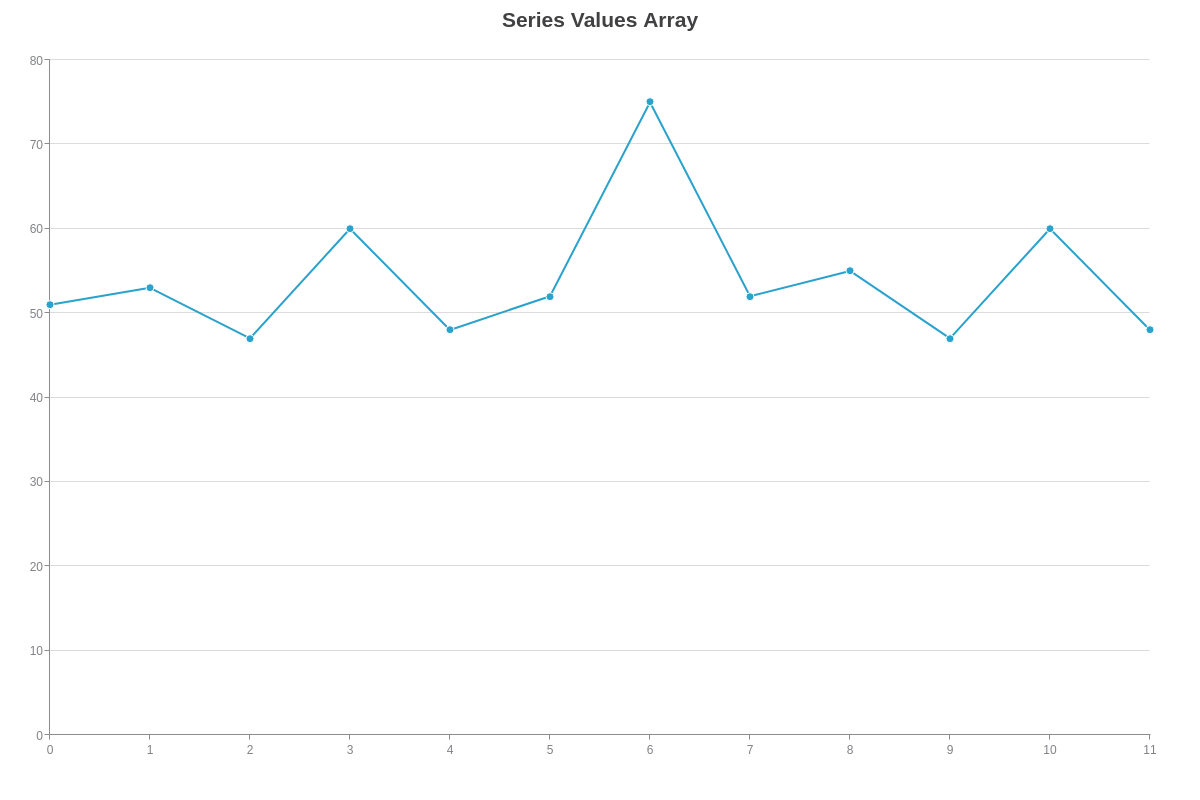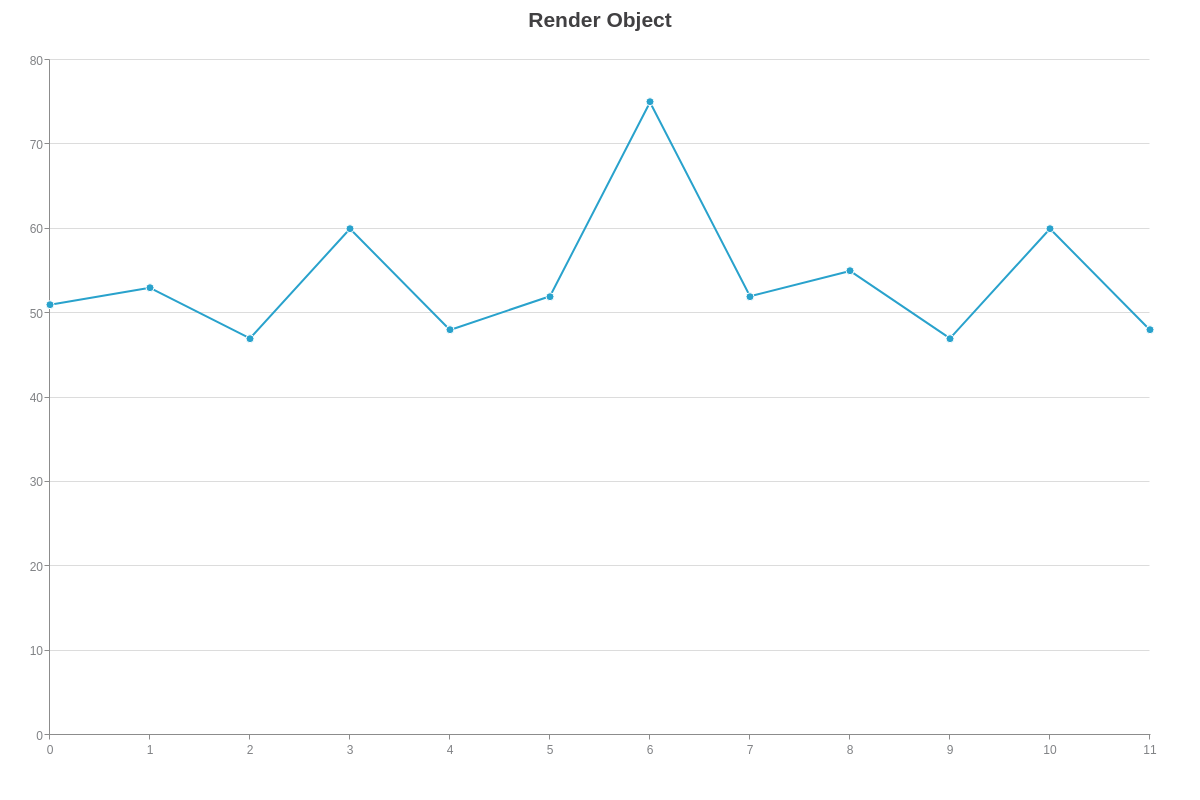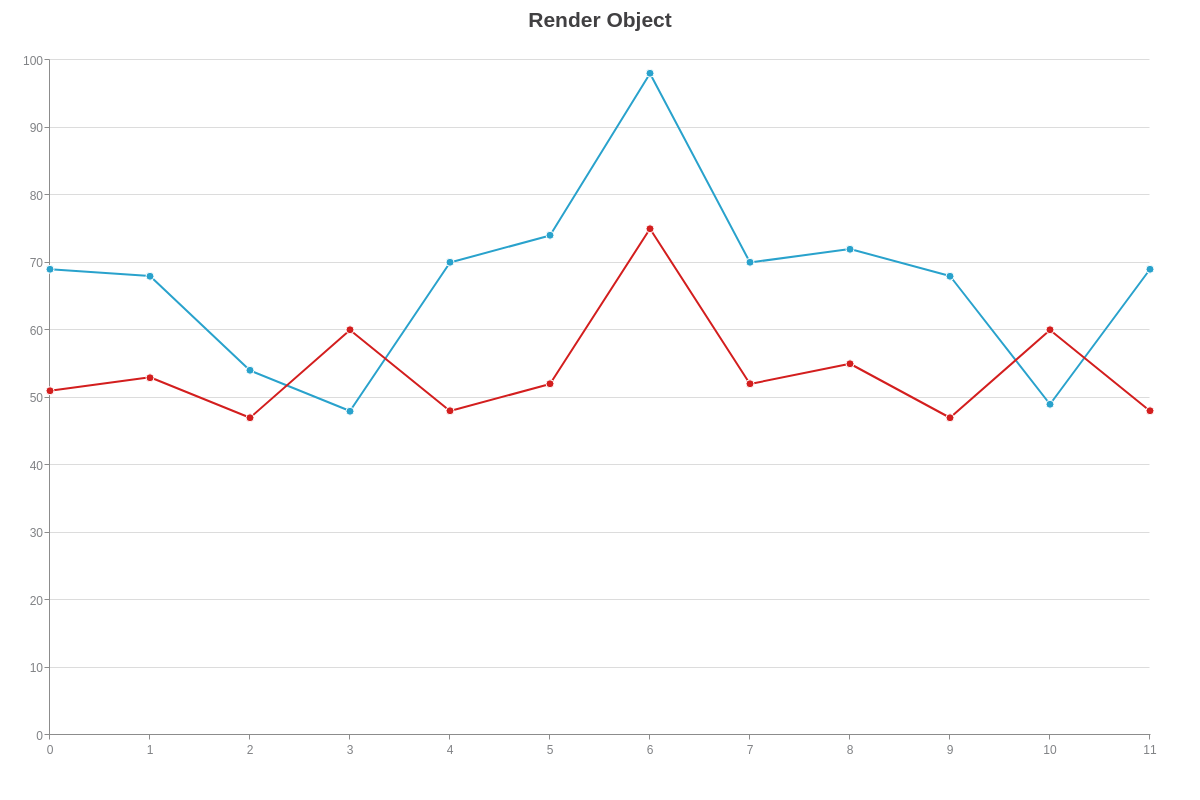Passing Data as JavaScript Objects
Overview
ZingChart is incredibly flexible and accepts many forms of JavaScript objects to create and update your charts.
Full JavaScript Objects
Begin by creating a JavaScript object.
<script>
let dataObj = {};
</script>
Populate your JS object with your chart configuration.
<script>
let dataObj={
type: 'line',
title: {
text: 'Chart Data Object'
},
series: [
{
values: [69,68,54,48,70,74,98,70,72,68,49,69]
}
]
};
</script>
Standard JavaScript objects and JSON can both be used. Here is the above JS object in flat JSON form:
let dataObj={
type: 'line',
title: {
text: 'Chart Data Object'
},
series: [
{
values: [69,68,54,48,70,74,98,70,72,68,49,69]
}
]
};
Pass the object into your zingchart.render()function call's data option.
<script>
let dataObj={
type: 'line',
title: {
text: 'Chart Data Object'
},
series: [
{
values: [69,68,54,48,70,74,98,70,72,68,49,69]
}
]
};
window.onload=function(){
zingchart.render({
id: 'myChart',
output: 'svg',
height: '400px',
width: '100%',
data:dataObj
});
};
</script>
Demo
Individual Objects
You can create JavaScript objects to hold individual chart objects for use in your chart JSON.
<script>
let seriesObj1={
values: [69,68,54,48,70,74,98,70,72,68,49,69]
};
let seriesObj2={
values: [51,53,47,60,48,52,75,52,55,47,60,48]
};
window.onload=function(){
zingchart.render({
id: 'myChart2',
output: 'svg',
height: '400px',
width: '100%',
data: {
type: 'line',
title: {
text: 'Series Data Objects'
},
series: [
seriesObj1,seriesObj2
]
}
});
};
</script>

JavaScript arrays can also be used in chart data.
<script>
let valueArray=[51,53,47,60,48,52,75,52,55,47,60,48];
window.onload=function(){
zingchart.render({
id: 'myChart3',
output: 'svg',
height: '400px',
width: '100%',
data: {
type: 'line',
title: {
text: 'Series Values Array'
},
series: [
{
values:valueArray
}
]
}
});
};
</script>

Config Objects
Use a JavaScript object to hold zingchart.render() options.
<script>
let renderObj={
id: 'myChart4',
output: 'svg',
height: '400px',
width: '100%',
data: {
type: 'line',
title: {
text: 'Render Object'
},
series: [
{
values: [51,53,47,60,48,52,75,52,55,47,60,48]
}
]
}
};
window.onload=function(){
zingchart.render(renderObj);
};
</script>

Modify object properties using dot-notation or bracket notation.
<script>
let renderObj={
id: 'myChart4',
output: 'svg',
height: '400px',
width: '100%',
data: {
type: 'line',
title: {
text: 'Render Object'
},
series: [
{
values: [51,53,47,60,48,52,75,52,55,47,60,48]
}
]
}
};
window.onload=function(){
zingchart.render(renderObj);
renderObj.id='myChart5';
renderObj[ 'data' ]={
type: 'line',
title: {
text: 'Changing Properties w/ Dot-Notation and Bracket Notation'
},
series: [
{
values: [51,53,47,60,48,52,75,52,55,47,60,48]
}
]
};
zingchart.render(renderObj);
};
</script>

Summary
JavaScript objects allow for a ton of flexibility and can make it simple to manipulate chart data using JavaScript or our extensive API.